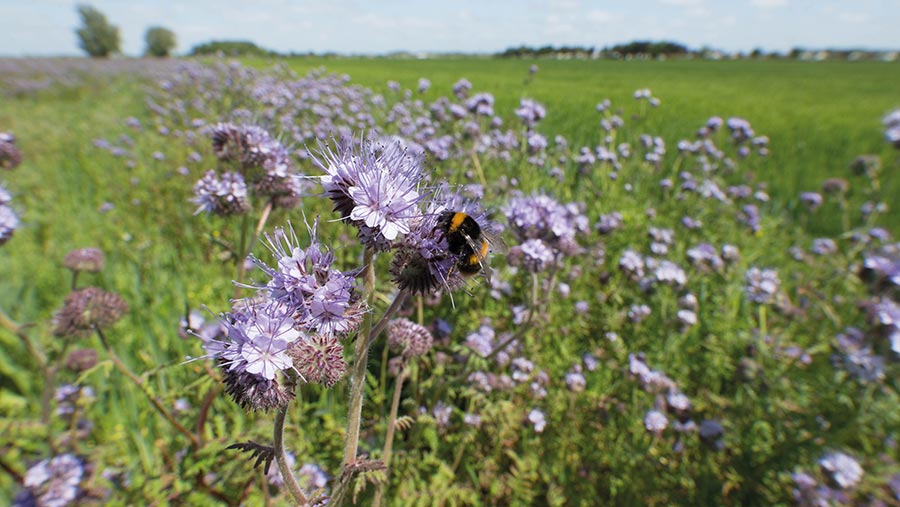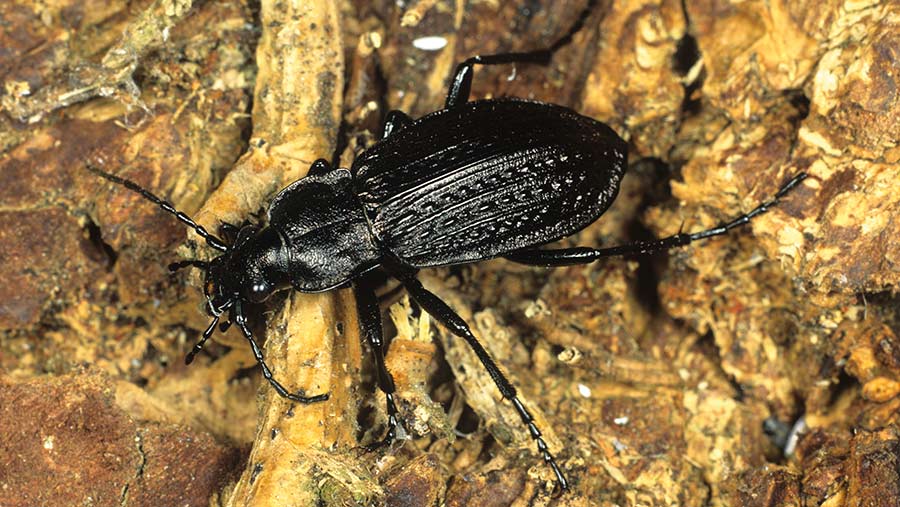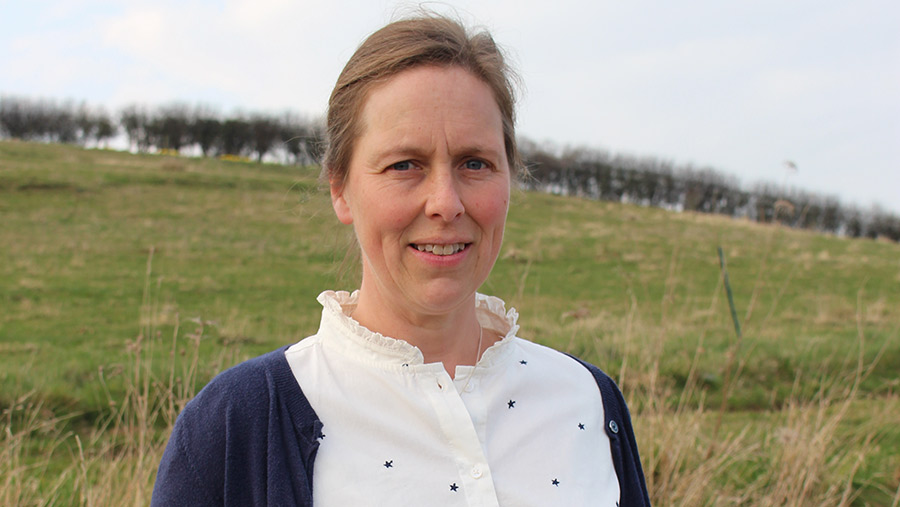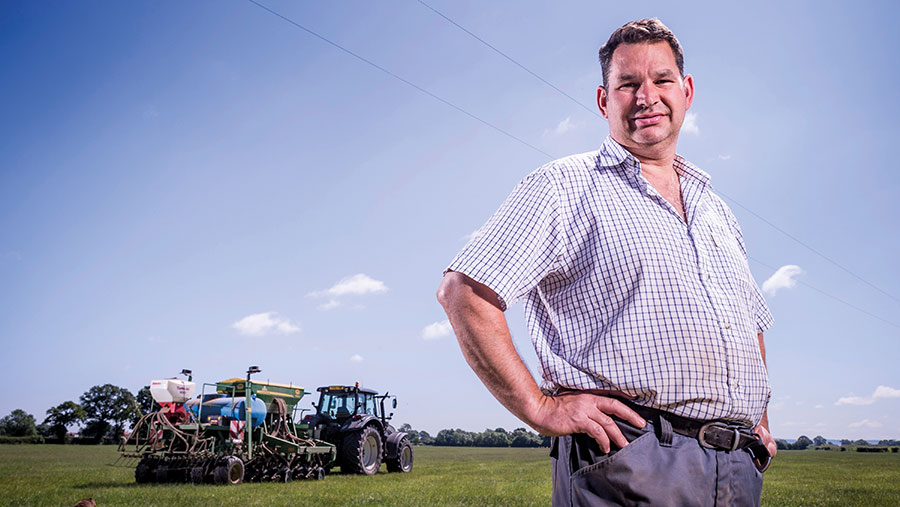Why two growers want to make more of beneficial insects
 © Tim Scrivener
© Tim Scrivener Flower-rich strips and grass margins have long been a feature on farms as part of environmental schemes, but they could also save farmers money by eliminating the need for insecticides.
Instead of spraying insecticides, growers would farm beneficial insects as livestock to feast on pests such as aphids carrying barley yellow dwarf virus.
See also: How a living mulch can help farmers cut their fertiliser bill
These insects can also help out in situations where insecticides are no longer available or effective, such as controlling grain aphids, which are largely known to be resistant to pyrethroids.
Having good-quality environmental strips is key, as they not only provide food for beneficials such as ladybirds and ground beetles, but they are also habitats where beneficials can thrive.
But there are many unanswered questions. For example, what species of plants should farmers include in their margins and where should they be positioned relative to the crop?
A group of six farmers is working with the AHDB and researchers as part of an Innovative Farmers field lab (see “Field lab”).
They range from those just starting out with flowering strips to members with several years’ experience.
Here, Farmers Weekly talks to two growers taking part in the project.

© Nigel Cattlin/Science Photo Library
Frances Standen, Birkdale Farm, Terrington, North Yorkshire
Frances Standen knows that her Higher Level Stewardship (HLS) flowering strips are having a positive effect on beneficial insects, as she hasn’t had to use any insecticides for the past four years.
However, she hopes to learn more about the beneficial insects on her farm and whether she can make even greater use of them.
She took on the tenancy of the farm, along with her husband, James, five years ago, having previously managed an estate in Kent.
Farm facts
- Farms 120ha, 81ha of which is arable and the rest is a mix of grassland and HLS options
- Adopted regenerative farming techniques, with the introduction of direct drilling
- Arable cropping is continuous wheat in rotation with grass/herbal leys as break crops
- Integrated livestock with 150 breeding NZ Romney ewes

Frances Standen © Frances Standen
There was an existing HLS agreement which includes flower-rich margins, which have now been in place for 11 years.
The 6m strips contain a standard mix of species, including knapweed, bird’s foot trefoil, red clover, yellow rattle and ox eye daisy.
The farm has seen the benefits of HLS strips on diversity. “We are seeing more beetles and invertebrates on the ground, record a good selection of moths and have three barn owls living on the farm,” Mrs Standen says.
She adds that grey partridges are a good indicator species, as they are insect eaters. “We have been seeing more of them in the past few years.”
This has increased the farm’s confidence in not using insecticides, instead targeting:
- Ladybirds and parasitic wasps to manage aphids
- Ground beetles for slugs.
The couple grow Extase wheat and they haven’t seen any barley yellow dwarf virus, despite never spraying the crop.
Slug pellets have only been used once, otherwise they are managing the pest through a combination of promoting beneficials and drilling at higher seed rates.
Seed rates are typically 10-15% higher since the switch to direct drilling from a plough-based approach.
However, they admit that the benefits are based on anecdotal observations and they hope to generate firm data from the project by monitoring the number of beneficial insects.
“Also, we don’t know if the strips are in the best locations. Is it most beneficial to have linear strips like we have running along the side of the fields, or do we need plots within the field, or even strips running right through?
“If we find they don’t fly far, we may have to think of changes in the future and have strips through the field,” she says.
In addition, she hopes to encourage others to establish flowering margins and to share her extensive experience.
The project kicked off in April, and data will again be collected later in July.
Species
At Birkdale Farm, they have a lot of flowers and rare plants that used to grow in arable fields, like weasel snout, which has a little pink flower.
“These are already attracting insects, but we want to know how to tweak what we’ve got to attract even more beneficials,” says Frances Standen.
“We’ve got a lot of species that are specific to the farm, so we don’t need to introduce new flowers, but rather improve what we’ve already got.”
Flowers that are attracting insects on the farm include bird’s foot trefoil, knapweed and meadow cranesbill, and there are rarer ones such as large flowered hemp nettle, southern marsh orchid, and corn buttercup.
Angus Gowthorpe, Approach Farm, near York
Angus Gowthorpe hopes to find out where to distribute flowering strips to maximise beneficial insect numbers on his farm.
Mixed farmer Mr Gowthorpe has had his fair share of pests, having lost his entire OSR crop in 2019 to flea beetle, and previously suffering up to 15% crop losses due to barley yellow dwarf virus.
He has also had problems with bruchid beetle reducing the value of his beans by about £30/t.
Since 2014, he has been farming regeneratively and has not used insecticides on his 161ha farm, where he produces arable crops and grazes suckler cattle.
Farm facts
- Area 164ha – mixed arable and beef
- Cropping Winter wheat, winter barley, spring beans, spring oats, oilseed rape, herbal ley, grass/clover ley and permanent pasture
- Regeneratively farming since 2014

Angus Gowthorpe © Jim Varney
“We have been increasing beneficials for some time, but it has been more as a result of us going down the regenerative farming route, with more diverse rotations and not using insecticides, than something we have been trying to achieve deliberately,” says Mr Gowthorpe.
“Now he wants to increase his pollinators and predatory insects to fight pests, and boost his farm’s biodiversity in general.
Current measures at Approach Farm
In-field These are primarily no-till – so not disturbing the in-field habitats/nests/feeding grounds of the beneficials. It also includes a wide and diverse rotation, as well as cover crops and catch crops, with as many flowering plants in these as possible. There is also an area of bumblebird mix.
Field margin There are multiple 4m grass margins around the farm, as well as flowering margins. Hedgecutting is carried out every other year, with many mature trees within these hedgerows.
The farm has a further 20ha of temporary herbal leys for the cattle, which helps beneficials through its multiple flowering plants, including red and white clover, and chicory.
“I’m hoping to better understand what flower and grass species we need to attract specific insects, and also how far apart the flower margins need to be.
“There is some research that shows insects travel about 50m, so you should plant your flower margins, or in-field flower strips, no more than 100m apart. That’s in a conventional system, though, so I want to know if the same applies in a regenerative system like mine.”
Field lab
Six farmers are taking part in the project aimed at learning more about how to attract and support the right insects, as well as when and where they are most needed.
They will do this by examining the effect of flower establishment techniques, flower species mixes, and distribution of flowering features on farm.
It is hoped their findings will help other farmers gain more confidence and knowledge about integrating flowers into their systems, so they can reduce their reliance on pesticides and fungicides.
The farmers will monitor insect populations in existing and newly established flowering features, and also experiment with different seed mixes and establishment techniques based on their soil types.
Some will also trial different distribution of flowers around their farms, such as flower strips within crops, or large blocks of flowers, instead of just flowering margins.
Gaining knowledge about a range of systems is a key part of the trial, explains Emily Pope, senior knowledge transfer manager at AHDB, who is co-ordinating the field lab.
“What is different about this trial is that we are including the farmers’ systems as they are, rather than creating uniform conditions. Therefore, it’s about seeing how we can use flowers and insects in real-life farming situations,” she says.
The AHDB-sponsored Innovative Farmers field lab is supported by the Soil Association and involves researchers from the AHDB, Newcastle University, Adas and the Stockbridge Technology Centre.
